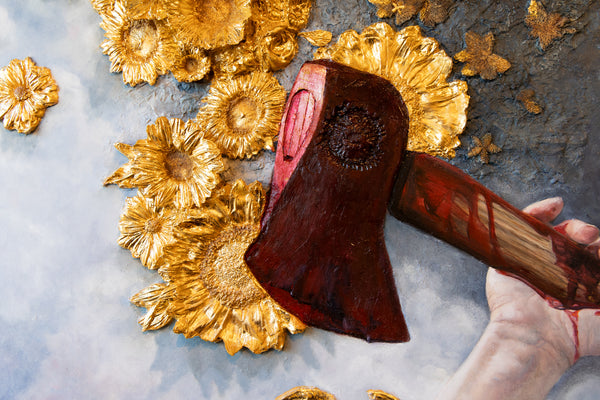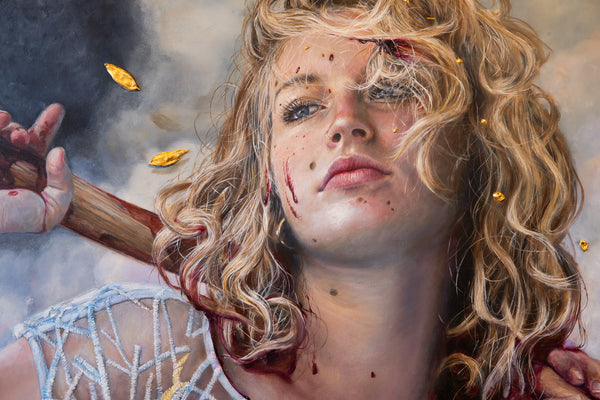What makes some art controversial?
Art, in its myriad forms, has always possessed the uncanny ability to evoke powerful emotions, stir deep-seated thoughts, and ignite impassioned debates. At the heart of this dynamism lies controversy – a force that propels art beyond mere aesthetics into the realm of societal critique, philosophical exploration, and personal interpretation. In this discourse, we delve into the labyrinth of controversial art, using June Stratton's captivating painting, "Hickory Reckoning," as our guiding beacon.

"The Reckoning" stands as a testament to the potency of visual art in challenging societal norms and inciting discourse. At first glance, the painting arrests the viewer's attention with its arresting imagery: a young girl wielding a bloody axe, her gaze unwavering and resolute. The juxtaposition of innocence and violence, rendered with striking realism, immediately sparks intrigue and discomfort.
One of the primary factors contributing to the controversy surrounding "Hickory Reckoning" is its subversion of traditional gender roles and expectations. In a society where women are often portrayed as delicate and passive, the depiction of a young girl as the bearer of such visceral power disrupts conventional narratives. The painting compels viewers to confront their preconceived notions of femininity and challenges them to reconsider the multifaceted nature of human identity.
Furthermore, the symbolism inherent in the bloody axe serves as a catalyst for deeper reflection. Historically associated with violence, conflict, and upheaval, the axe emerges as a potent metaphor for the darker aspects of human nature. Through this symbol, "Hickory Reckoning" invites viewers to contemplate the complexities of power, justice, and the moral ambiguities inherent in human existence.
Beyond its thematic provocations, the controversy surrounding "Hickory Reckoning" also stems from its evocative visual composition. June Stratton's masterful use of color, light, and texture imbues the painting with a visceral intensity that elicits visceral reactions from viewers. The stark contrast between the girl's angelic countenance and the macabre scene she inhabits creates a sense of cognitive dissonance, challenging viewers to reconcile the seemingly irreconcilable.
Moreover, the ambiguity shrouding the narrative of "Hickory Reckoning" adds another layer of intrigue to the painting. Is the girl a victim or a perpetrator? What events led to this moment of reckoning? Such unanswered questions invite viewers to participate actively in the construction of meaning, fostering a sense of intellectual engagement and emotional investment.

"Hickory Reckoning" serves as a poignant exemplar of the myriad factors that contribute to the controversy surrounding art. Through its subversion of gender norms, provocative symbolism, evocative composition, and narrative ambiguity, the painting transcends mere aesthetic appeal to become a catalyst for introspection, dialogue, and societal critique. In confronting the discomforting truths it unveils, viewers are compelled to confront their own biases, assumptions, and moral convictions, ultimately enriching their understanding of both art and the human condition.
